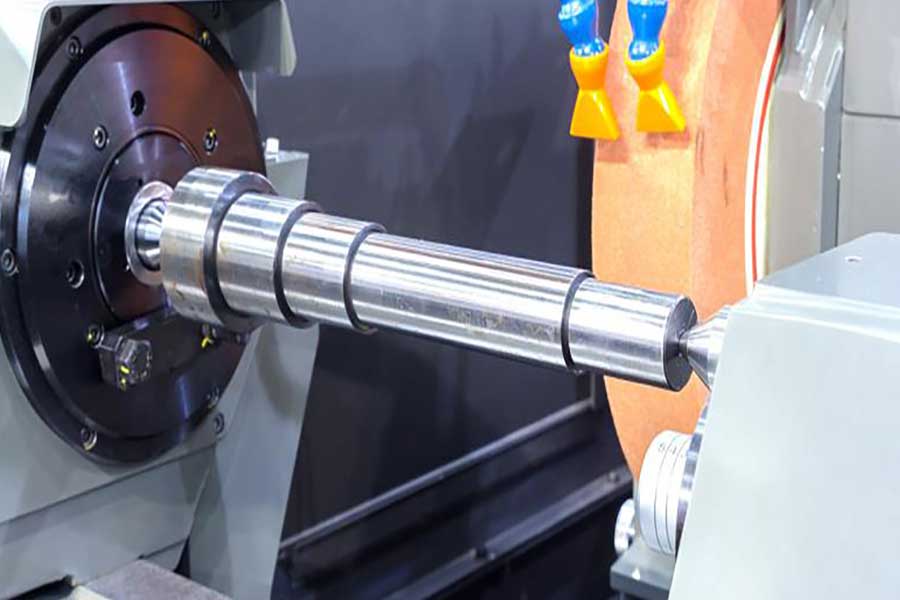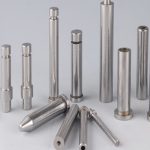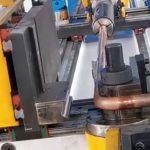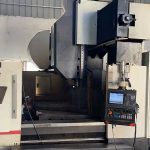Precision grinding operations cover all applications that require tight tolerances on dimensions and low Ra surface finish requirements, including cylindrical external grinding (OD), internal grinding (ID), surface grinding and creep grinding. The grinding wheels used for these operations are usually conventional alumina grinding wheels or ceramic grinding wheels with different shapes and sizes, but depending on the application, super-ground diamond and cBN grinding wheels can also be used.
In these applications, as an extension of the spindle, a grinding spindle or grinding wheel cutter axis may also be required. Wheel axles allow greater flexibility in machine setup and generally increase the ability of the wheels to reach different features on the workpiece. They are highly customizable and have tight tolerances, so a well-designed axle should be strong and balanced. The tool holder is one of the most basic components in precision grinding machines. If designed correctly, it can prove to be a cost-effective solution to improve precision grinding performance.
Although most engineers understand their importance, few people know the impact that the wheel axle may have on optimizing the grinding process. When trying to correct the wrong grinding process or just want to improve the result, most engineers will re-evaluate the speed, output, grinding wheel and material. In many newer applications, the wheel axle is an often overlooked source of vibration, which can result in poor workpiece quality. This article explains how axles affect the performance of precision grinders and what steps can be taken to improve them.
In precision grinding applications, machine stiffness is critical to obtain the best performance and results. Insufficient stiffness will cause shock marks on the surface of the material being ground. A more rigid machine can achieve a higher feed rate, thereby reducing cycle time and improving the stability of the grinding zone. This can extend wheel life, accuracy and productivity.

There are two types of stiffness for machine parts. The static stiffness is calculated in N/mm and describes the stiffness of the component under near static load. Dynamic stiffness (also in N/mm) relates stiffness to the effects of damping and mass, and is usually the smallest at natural frequencies or the weakest vibration mode. The result is usually 1/4-½ of the static stiffness.
The main factors driving the stiffness of the grinding system are the machine, parts, fixtures and grinding wheels. But the stiffness of the system is only its weakest component, and because the axle must be longer to achieve the workpiece characteristics in some grinding processes, it is often the weakest link. There are three main axle performance parameters: material, diameter and length.
The characteristics of the axle
Wheels and axles are often made of one of three materials, depending on the application:
Tungsten carbide is very suitable for precision inner diameter grinding, especially when using vitrified cBN, because of the hardness of the material. Although the most expensive, it lasts the longest.
When vibration must be absorbed, heavy metals (Densalloy and No-chat) are required. Both cost and stiffness are lower than tungsten carbide, but they are softer materials and not suitable for frequent movement. Because of their weight, they are the most difficult to balance.
For most grinding applications, tool steel is the most common and probably the best choice. It has better damping characteristics and is lighter than carbide. It is also harder and lighter than heavy metals.
Usually, long wheel shafts are associated with inner diameter grinding, but some outer diameter and creep feed grinding processes have begun to use extended shaft centers to solve the problem of clearance. Inner diameter grinding usually requires the longest aspect ratio. According to the gap of the parts, the use of a smaller diameter super grinding wheel can use a larger diameter tool bar. And because the wear rate and life of super wheels tend to exceed that of traditional abrasives, the total wheel life of each part can remain similar. If the application of coolant limits the optimized toolholder length and/or outer diameter, then coolant delivery through the spindle or part fixture can help.
Experienced operators and manufacturing engineers know that the shorter the shaft, the better the grinding, but they may be surprised to find that it is better. One might think that the hardness of a 50 mm long shaft is twice that of a 100 mm long shaft. In fact, the hardness of the hub changes exponentially with the length or outer diameter. Increasing the outer diameter of the cutter shaft by 10% will increase the static stiffness by 46%, while reducing the length by 10% will increase the static stiffness by 37%. The static stiffness of a steel mandrel with a diameter of 25 mm and a shaft length of 100 mm is 12,000 N/mm, and the shaft length is 50 mm = 96,000 N/mm, which means that the shorter mandrel is eight times more rigid.
Optimize performance
There are three options to reduce axle stiffness and related flutter problems. The simplest and most cost-effective option is to try to shorten the axle. A workaround is possible, and sometimes in some cases, it is better to use shorter trees for convenience. Calculating the required shank stiffness and length can help ensure that the correct size shank is used.
The maximum recommended length-to-diameter ratio of the cutter bar is 5:1; ratios greater than this ratio will risk hitting the natural frequency of the arbor before reaching the working wheel speed. A shorter tool shaft has higher rigidity and can reduce the chance of the machine’s natural frequency approaching the spindle speed, thereby making it less likely to produce natural frequency vibration, which appears as flutter on the workpiece.
Reducing the weight of the arbor will also change the frequency of dynamic stiffness, but this may cause more problems. If the goal is to change the natural frequency without changing the external dimensions, drilling a hole with an outer diameter of 50% of the OD in the center of the mandrel can improve the dynamic stiffness. This is achieved by reducing the weight by 25%, which only reduces the static stiffness by 10%.
As a last resort, replacing the mandrel material can increase stiffness, but this can be expensive and may not achieve the desired result. For example, switching the axle core from steel to cemented carbide can increase the static stiffness by as much as three times; however, the increased weight and reduced damping characteristics of carbides may reduce the dynamic stiffness to the steel spindle with little net benefit Degree. A new, lighter weight material (such as carbon fiber/steel) may be a better choice because it will increase static and dynamic stiffness, but this solution is more costly. As the length of the mandrel increases to the recommended maximum ratio of 5:1, the increased stiffness of the exotic material gradually decreases.
Optimizing the aspect ratio of the grinding mandrel is one of the few changes made by the end user to the grinding machine, which can increase static and dynamic stiffness and improve grinding performance at a relatively low cost.
Link to this article: How does the axle affect the performance of a precision grinder?
Reprint Statement: If there are no special instructions, all articles on this site are original. Please indicate the source for reprinting:https://www.cncmachiningptj.com/,thanks!
 Sheet metal, beryllium, carbon steel, magnesium, 3D printing, precision CNC machining services for heavy equipment, construction, agriculture and hydraulic industries. Suitable for plastics and rare alloys machining. It can turn parts up to 15.7 inches in diameter. Processes include swiss machining,broaching, turning, milling, boring and threading. It also provides metal polishing, painting, surface grinding and shaft straightening services. The production range is up to 50,000 pieces. Suitable for screw, coupling, bearing, pump, gearbox housing, drum dryer and rotary feed valve applications.PTJ will strategize with you to provide the most cost-effective services to help you reach your target,Welcome to Contact us ( [email protected] ) directly for your new project.
Sheet metal, beryllium, carbon steel, magnesium, 3D printing, precision CNC machining services for heavy equipment, construction, agriculture and hydraulic industries. Suitable for plastics and rare alloys machining. It can turn parts up to 15.7 inches in diameter. Processes include swiss machining,broaching, turning, milling, boring and threading. It also provides metal polishing, painting, surface grinding and shaft straightening services. The production range is up to 50,000 pieces. Suitable for screw, coupling, bearing, pump, gearbox housing, drum dryer and rotary feed valve applications.PTJ will strategize with you to provide the most cost-effective services to help you reach your target,Welcome to Contact us ( [email protected] ) directly for your new project.
Link to this article:How does the axle affect the performance of a precision grinder?
Reprint Statement: If there are no special instructions, all articles on this site are original. Please indicate the source for reprinting:Alloy Wiki,thanks!^^







